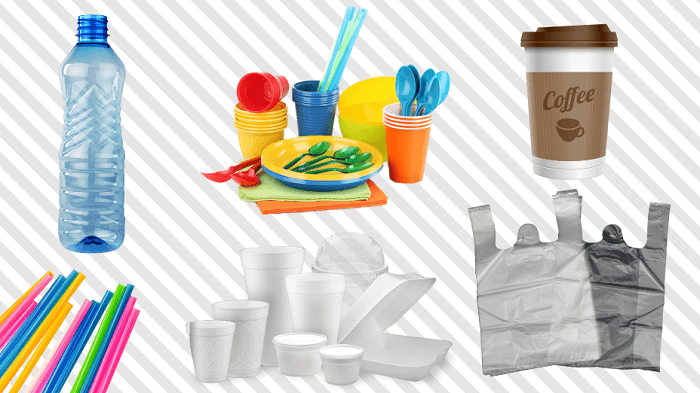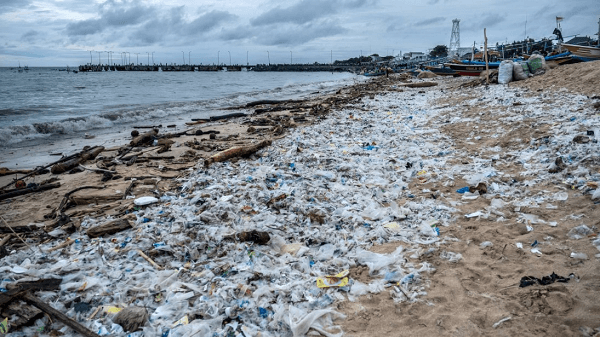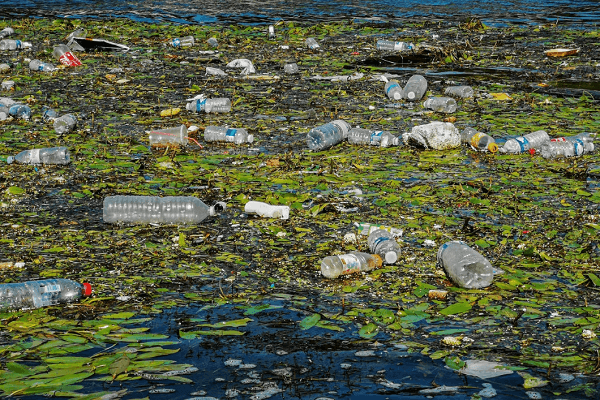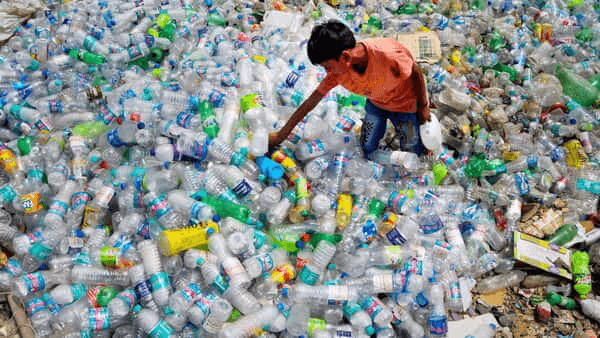Single Use Plastic EssayUnited Nations Decade on Ecosystem Restoration is continuously trying to eliminate plastic product pollution. The name is self-explanatory: disposable plastics are used only once before they go into the dustbin or for recycling. Single Plastics include coffee stirrers, food packets, plastic bags, and water bottles. It may be convenient for others, but they pose a considerable threat to human health and the environment. Intake of plastic contaminates seafood, formation of dangerous plastics, and burning of plastic waste are some of the causes of phasing out Single-Use- Plastics from the environment. 
Plastic is a chain of synthetic polymers, and it was founded in mid of the 19th century. Its popularity touched its height in 1970. Producers started replacing traditional paper and glass with lighter, affordable, durable plastic methods. For example, plastic jugs replaced milk jars. Some plastics are very important; without them, work will not proceed. Straw for those who are disabled and surgical gloves for the doctor are some examples, but this usage is only a tiny fraction of total use. Approximately 300 million tonnes of plastic waste are generated every year. 10-13% of plastic is only recyclable on a global scale. 10-13 % of the plastic is only recycled. Plastics that have been made from petroleum are very hard to recycle. There few limited numbers of plastics are present which can be recycled. Petroleum-generated plastic is non-biodegradable and generally pressed into landfill. Non-Biodegradable substances cannot be broken with the help of microorganisms like bacteria. Plastic is one such material. It generates toxicity that enters the food chain and affects human life and health. These plastics also find their way toward the ocean. Reports of the United Nations Environmental Program suggest that, at present, 75-199 million tonnes of plastic waste is in the ocean water. It is estimated that in the year 2040, it will get tripled. Plastic is the most visible, prominent, and persistent non-biodegradable and harmful waste in ocean water. Plastics account for 85% of marine litter. This toxicity can be traced into our bloodstream, and research points out that it can destroy our endocrine system, leading to impaired immunity, congenital disabilities, cancer, infertility, and other ailments. Carbon is a greenhouse gas that enormously contributes to global warming. Plastics significantly contribute to the deepening of the climate crisis due to its fossil- fuel based supply chain. During plastic production, transportation and extraction of fossil emissions are estimated to be around 12.5 to 13.5 million metric tonnes of carbon annually. Single-use plastics manufacturer uses 6% of the world's oil supply, which is believed to extend to 20%. Reusable AlternativesPrioritizing reusable products is very important for environmental health and could be cost-effective. Stores that allow customers to bring their carry bags can save the Single Use Plastics product-related expense. It also benefits consumers as they do not have to pay extra for the bags. Cotton, Jute, and Non-woven polypropylene bags are now trending these days. These bags are handy and can store large amounts of products in one bag. Facts Related to Single-Use Plastics
Negative Impact of Single Use Plastics
Standard Solution Against Single-Use Plastic
Single-Use Plastic in IndiaPrime Minister Narendra Modi called for the removal of single-use plastics from the environment by 2022. It was defining moment to stop the pollution that is caused due to the littering of plastic waste. The negative effect of plastic is recognized all over the world. It affects the environment negatively on aquatic as well as terrestrial ecosystems. Addressing this pollution menace has become the need of the hour by the Government. India and in the 4th United Nations Environment Assembly (UNEA), Central Government came up with a resolution to address the issue of single-use plastic. It recognized that the world needs to come together to address this challenge. 5th session of the United Nations Environment Assembly that was held recently, India pursued as a member of the state to reach to consensus for global action towards plastic pollution. The Central Government is also focused on providing an ecosystem for the presence of other alternatives throughout the country. The Ministry of Environment issued plastic Waste Management Amendment Rules, Forest and Climate Change on 12th August 2021 that prohibit the import, manufacture, stocking, sale, distribution, and use of the following single plastic items with minimal utility and immense littering capacity with effect from 1st July 2022.
Carry bags with a thickness of fewer than 75 microns have been prohibited from stocking, selling, and using plastics, manufacture, import, and distribution from 31st September 2021. Notifications/order is already issued by the 34 States or Union Territories that have brought a regulation, either partial or complete ban on recognized single-use plastics or carry bags. The Government had sought suggestions and objections from all concerned stakeholders and provided 60 days to complete this exercise. Suggestions and Objection seeking draft notification in the Gazette of India was issued on 11th March 2021. Before the draft notification was released, it consulted with relevant ministries. The Final notification was issued after looking at all the ministry's comments, suggestions, and objections. Due consideration was given to all suggestions. Capacity-Building Workshops and awareness programs were conducted with all concerned stakeholders regarding imposing a ban on recognized single-use plastics. This awareness program has brought Industry, startups, Entrepreneurs, Regulatory bodies, citizen organizations, Local, State, and Central governments, and academic and Research and Development institutions. The ban on single-use plastics was issued under Plastic Waste Management Amendment Rules and will come into force on 1st July 2022. CPCB had come out with comprehensive measures for the smooth and proper enforcement of the ban. The Ministry of Micro, Small, and Medium Enterprises will help MSME units that were part of the production of banned single-use plastic (SUP) and shift to other alternatives. These programs will give necessary support in infrastructural support, technology upgradation, creating awareness, and marketing support as per the rule and regulations of the scheme. CPCB has taken measures toward lowering the supply of raw materials to make SUP. Digital initiatives are being taken to bring awareness and guidance to the State Board for smooth and effective enforcement of the directions. There is an entire ban on sachets, a plastic material seen in packing, stocking, and selling pan masala, tobacco, and gutkha, under the Plastic Waste Management Rules, 2016. Identified orders have been issued to curb the supply of recognized SUP material at local, state, and national levels. Directions were also released to State Pollution Control Board (SPCB) and Pollution Control Board (PCB) for revocation of existing business houses involved in producing Single Use Plastic materials. An Order has been delegated to the Customs Authority to prohibit the import of Single-Use Plastic material. Directions have been given to the local authorities to reissue the new licenses to commercial business houses pre-conditioned that they should not use banned SUP items. If any were found defying the ban, licenses would be canceled for commercial houses. State and national control rooms have been established for the smooth and effective implementation of the ban on recognized single-use plastics. Special enforcement teams have been created to check the import, illegal production, sale, distribution, and stocking of the banned SUP items. Union Territories and States have been informed to keep vigil and checkpoints to prohibit inter-state transportation of banned SUP items. To curb plastic pollution and to empower citizen Central Pollution Control Board (CPCB) Redressal App has been brought. Guidelines on Extended Producers Responsibility on plastic packaging as Plastic Waste Management Amendment Rules have been issued by the Ministry of Environment, Forest and Climate Change. The issued Guidelines will give to promote the development of other alternative sources. Sustainable Plastic Packaging by businesses is the need of the moment. The success of this decision by the Government largely depends on the concerted and effective involvement of all stakeholders through active participation. PunishmentIf someone is found violating the ban, they would be liable to pay a fine under the Environmental Protection Act 1986, which says a penalty of up to 1 lakh or imprisonment of up to 5 years, or both. Violators would also be told to compensate Environmental damages to the State Pollution Control Board (SPCB). Municipal corporations in the cities have laws regarding plastic and impose penalties through their law code. Other Countries That Have Banned Plastic
In the United States of America (US), Single-use plastic (SUP) is banned in 8 states. Seattle was the first big city that has taken a step to ban plastic straws in 2018. California also joined the list in 2014.
Bangladesh banned thin plastic bags in 2002 and became the first country to do so.
It notified the ban on plastic bags in 2020 and has implemented its decision in a phased manner.
New Zealand decided to impose a ban on July 2019.
Europe Union issued directives on SUP on July 2021, which involve some SUP to which alternatives are present. SUP materials like straws, cotton placed, and cutlery are forbidden from the markets of the European Union states. The same condition applies to products made of ox-degradable plastics and beverages and food composed of extended polystyrene. Negative Effects of Banning Plastic Bags
Positive Effects of Banning the Plastic Bags
Frequently Asked Questions on Single-Use PlasticsQues: Why do plastics contaminate the environment? Ans: Plastic harms the environment because it affects the environment, animals, and people, as plastics can remain in the environment for thousands of years and release toxic gases. It affects the water sources that animals and humans take. Plastics also break into microplastics and can enter water sources through the food web. Ques: Enlist the most common type of plastic garbage. Ans: The most common form of garbage are plastic straws, plastic food, wrappers, drink lids, plastic food containers, bottles/cups, cigarette butts, and stirrers. Ques: How many animals are killed every day due to plastics? Ans: Sea Turtle conservancy reports that One million marine animals get killed each year due to plastic pollution in the ocean. Ques: Is recycling helps in the effective reduction of the environment? Ans: Money Bay Aquarium reports that the United States recycles 9% of its waste every year, and if recycling is done properly, it helps clean the environment. Ques: What is the best plastic replacement? Ans: The best plastic replacement for a single-use is that look for those plastics that can be reused. It could be fabric-produced bags, bamboo, plastic reusable, metal straw, mesh fabric-produced bags, and glass. Ques: How do plastics become contributory factors in the climate crisis? Ans: Plastics immensely helps in contributing to greenhouse gas emission at every stage. Data represents that plastic contributes to making up 20% of the World's oil production. Ques: Are there any legislative measures against Single-Use Plastic? Ans: European member states in the European Union has many laws, directives, and regulation regarding plastic items. Ques: Why is plastic in the ocean a problem? Ans: Plastic debris has been found on the floating surface, melting out of Arctic Sea ice, settling at the deepest point of the ocean floor, and washing up on the most remote coastlines. As plastics continue to inundate our oceans, the number of marine animals affected is becoming bigger. Thousands of marine species are killed due to entanglement or ingestion of plastics permeating the marine environment, from fish to zooplankton. When eaten by fish, some microplastics penetrate the food chain and the fish we take. The impact of plastic pollution is underestimated at present. Ques: What can a common do to address the problem? Ans: Common people being consumers of plastic, has the potential to end the plastic menace. You have the power to reverse the trend to the ever-growing business of single-use use plastics and opt for sustainable alternatives or buy plastic-free products. Requesting the Corporate World to make plastic-free products. Ques: How is plastic generated? Ans: Plastic is made by combining various atoms and molecules that are held together with a chemical bond. While during production, these molecules are called monomers. A chemical bond combines these monomers into a chain of networks, and this process is called polymerization. The end product is called polymer or plastics. Ques: Name some of the countries that have banned plastics. Ans: Countries that have banned plastics are: India, Bangladesh, The United Kingdom, and Kenya. Ques: When was single-use plastic banned in India? Ans: India banned single-use plastic from 1 July 2022. Ques: What was the reason for banning Single-use plastic in India? Ans: The various reasons for banning Single-use plastic were curbing plastic pollution and single-use plastics harming the aquatic and terrestrial ecosystem. Ques: Which was the first country to ban single-use plastic? Ans: Bangladesh became the first country to ban plastic bags and banned plastics in 2002. Ques: Which country has the highest consumption of plastics? Ans: Following countries have the highest consumption of plastics, the United States, United Kingdom, South Korea, and Germany. The plastic waste per capita kilogram per year for the respective nation is 105.3, 98.66, 88.09, and 81.16. Ques: Which countries recycle the most? Ans: Germany is the country that recycles the most and has the highest recycling rate in the World. It appears that Germany recycles 56% of the waste it generates.
Next TopicFather of English Essay
|
 For Videos Join Our Youtube Channel: Join Now
For Videos Join Our Youtube Channel: Join Now
Feedback
- Send your Feedback to [email protected]
Help Others, Please Share










